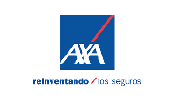An implicit lease rate is actually an interest rate that you need to pay when getting a loan. All these factors and more have a direct impact on an investor’s implicit interest rate. The first step in gaining this understanding is to know how to calculate implicit interest rates. When the unemployment rate is high, consumers spend less money, and economic growth slows.
- If the implicit interest rate is high, it is likely that investors expect to receive a high return on their investment.
- It is also unlikely for a lessor to provide the necessary internal metrics as it would allow the lessee to understand exactly what the lessor’s rate of return or profit is on the transaction.
- For instance, imagine if the implicit interest rate on a car lease is similar to the rates on a conventional loan.
- Interest rates are usually expressed annually, but rates can also be expressed as monthly, daily, or any other period.
When leasing something, these small enterprises often deal with implicit interest rates. Implicit interest rate is also mentioned in a contract as a rent or lease payment. To lease a vehicle, the owner may mention a monetary factor that influences his decision on defining the expected interest rate. When multiplying the money ratio by the number needed, the business owner can accurately estimate the adequate annual interest rate.
Incremental Borrowing Rate for IFRS 16, ASC 842, and GASB 87: Discount Rates and When to Use Them
Determining the appropriate interest rate is critical for compliance under the new lease accounting standard for both the lessee and lessor. More specifically, the implicit interest rate under GASB 87 provides the internal rate of return necessary for establishing the lease liability and lease receivable for lessee and lessor, respectively. Due to lessee limitations, the implicit rate may not be readily available. However, the lessor should have the necessary details to calculate the implicit rate.
- There are other situations in every day life where you will encounter implicit interest rates.
- In conclusion, implicit interest rates can be analyzed using a variety of approaches, including the inflation approach, the investment approach, and the time preference approach.
- When there exists a surplus of demand for money or credit, lenders react by raising interest rates.
- If that rate is not readily determinable, then the incremental borrowing rate can be used.
- However, other forms of collateral can be used if they are comparable and acceptable by the lender.
The lessee can verify that an appropriate rate is being charged by the lessor or the implicit rate they estimated is appropriate. The lessor can confirm the terms within the lease agreement and what will be charged to the lessee. To determine the implicit rate in the lease, lessors should consider the term of the lease and assess the residual value of the underlying asset.
Therefore, we can understand the implied rate as a way to compare returns across different assets. A positive implied rate means that future borrowing rates are expected to increase, while a negative implied rate suggests that future borrowing rates are expected to decrease. The example we went through above is specifically related to a lessor. However, if you are a lessee and the required inputs for the IRR calculation are available, you can use the same formula and steps.
Lease Implicit Interest Rate Calculator
Or, if the futures contract price for a currency is 1.110 and the spot price is 1.050, the difference of 5.7% is the implied interest rate. In conclusion, implicit interest rates can be analyzed using a variety of approaches, including the inflation approach, the investment approach, and the time preference approach. Each of these approaches looks at the interest rate from a unique perspective.
However, when the unemployment rate is too low, it may lead to rampant inflation, a fast wage increase, and a high cost of doing business. As a result, interest rates and unemployment rates are normally inversely related; that is, when unemployment is high, interest rates are artificially lowered, usually in order to spur consumer spending. Conversely, when unemployment within an economy is low and there is a lot of consumer activity, interest rates will go up.
ASC 842 brings new challenges for companies, one of which is determining and applying interest rates. While a foolproof way to discern the discount rate for a lease does not exist, knowing the different options available and how to apply them correctly can help ease the adoption burden for companies left with questions. Because of the challenges in application faced by public companies, the FASB has also recently affirmed a proposed amendment to the standard which will provide additional flexibility in discount rate application when finalized. The last step in the amendment process is for a new accounting standard update to be drafted and voted upon.
What is Interest Rate?
Despite these challenges, the new lease accounting standard does prescribe the lessee to use the rate implicit in the lease if available as the discount rate. We are able to validate the calculation of the implicit rate we calculated using the IRR function above by using the free LeaseQuery Present Value Calculator tool. We will validate what is a chart of accounts and is it important our calculation in two steps, first by calculating the present value of the lease payments and next by calculating the present value of the unguaranteed residual value. The implied interest rate gives investors a way to compare returns across investments and evaluate the risk and return characteristics of that particular security.
Calculating the implicit interest rate
In the world of real estate and investments, the implicit interest rate plays an equally critical role. When it comes to a CMBS or REITs, these rates directly impact the value of securities and return on investment. The formula verifies that the implicit interest rate on this example loan is indeed 20%.
If the rate is not readily determinable to the lessee, the lessee should use their own incremental borrowing rate in place of the implicit rate. The implicit rate is always known to the lessor since the lessor is the one drafting the terms of the lease, and therefore is aware of what interest rate they have incorporated within the lease agreement. An implicit interest rate is the nominal interest rate implied by borrowing a fixed amount of money and returning a different amount of money in the future. For example, if you borrow $100,000 from your brother and promise to pay him back all the money plus an extra $25,000 in 5 years, you are paying an implicit interest rate. There are other situations in every day life where you will encounter implicit interest rates. The IRR, PV & NPV formulas within Excel assume the cash flows must occur at regular intervals, such as monthly or annually.
Private companies can expect to see the finalized ASU issued in late 2021, just in time for their adoption of ASC 842 in 2022. In the calculation above, we calculated the present value of the lease payments, and now we must calculate the present value of the unguaranteed residual value of $1,000. Using the present value calculator, as illustrated below, we calculate the present value of $1,000 paid five years in the future at a rate of 9.92% to be $623. To calculate the present value of the unguaranteed residual value, we use an end of period payment because the asset is returned to the lessor on the last day of the lease. For example, if the current U.S. dollar deposit rate is 1% for spot and 1.5% in one year’s time, the implied rate is the difference of 0.5%. Alternatively, if the spot price for a currency is 1.050 and the futures contract price is 1.1071, the difference of 5.71% is the implied interest rate.
Due to the nature of the implicit rate, the lessee will rarely be privy to all of the required assumptions for the calculation, as this is ultimately the basis for the lessor’s profit margin on the lease. This means the rate would not be “readily determinable” by the lessee. For a detailed example of calculation and further explanation of the implicit rate, click here. An $8,000 difference is the result, while the IRR, NPV & PV functions do not even pick up that difference. For more details on different ways to present value lease payments refer here.


















































